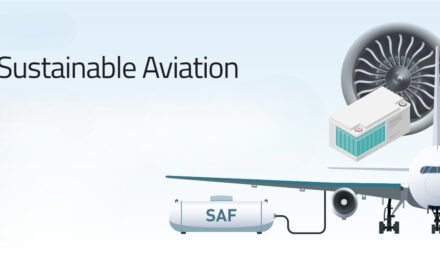Biofuels, specifically Sustainable Aviation Fuels (SAFs), are a key solution for reducing the aviation industry’s carbon footprint and improving sustainability. These fuels are designed to reduce greenhouse gas (GHG) emissions, enhance energy efficiency, and use renewable resources. Here’s a detailed overview of their impact on aviation sustainability and how they are produced:
1. Impact of Biofuels on Aviation Sustainability
1.1 Reduction in Carbon Emissions
- SAFs can reduce lifecycle GHG emissions by 50–80% compared to conventional jet fuel.
- Lifecycle emissions account for all stages, from feedstock production to combustion.
- Example: United Airlines used SAFs blended with conventional fuels, achieving significant emissions reductions in operational trials.
1.2 Compatibility with Existing Aircraft
- SAFs are drop-in fuels, meaning they can be blended with traditional jet fuel and used without modifying existing aircraft engines or fuel infrastructure.
- Current certifications allow up to 50% SAF blend with conventional jet fuel.
1.3 Improved Air Quality
- SAFs produce fewer particulate emissions and sulfur oxides during combustion, improving air quality around airports.
1.4 Circular Economy
- Many SAF feedstocks, such as waste oils, agricultural residues, and municipal waste, promote resource efficiency by repurposing waste materials.
1.5 Contribution to Decarbonization Goals
- Supports global aviation initiatives like ICAO’s Carbon Offsetting and Reduction Scheme for International Aviation (CORSIA) and IATA’s Net Zero by 2050 pledge.
1.6 Economic and Social Benefits
- Reduces dependency on fossil fuels and enhances energy security.
- Creates jobs in feedstock production, refining, and distribution.
2. Challenges and Limitations
2.1 Cost
- SAFs are currently 2–5 times more expensive than traditional jet fuel due to limited production capacity and higher feedstock costs.
2.2 Availability
- SAF production is limited, supplying less than 0.1% of global jet fuel demand.
- Scaling production to meet industry needs requires significant investment in infrastructure and technology.
2.3 Feedstock Limitations
- Competition for feedstocks with other industries, such as biodiesel or animal feed, can create supply constraints.
2.4 Certification and Regulation
- Expanding SAF adoption requires rigorous certification processes to ensure safety, performance, and sustainability.
3. How Biofuels Are Produced
3.1 Feedstocks
SAFs are derived from renewable sources such as:
- Lipid-Based Feedstocks:
- Used cooking oils, tallow, and other animal fats.
- Lignocellulosic Biomass:
- Agricultural residues, forestry waste, and energy crops like switchgrass.
- Municipal Solid Waste (MSW):
- Non-recyclable household and industrial waste.
- Algae:
- Algae-based biofuels offer high yields and can grow in non-arable areas.
- Power-to-Liquid (PtL) Sources:
- Synthetic fuels produced from captured carbon dioxide (CO₂) and green hydrogen.
3.2 Production Pathways
There are several certified pathways for producing SAFs:
- Hydroprocessed Esters and Fatty Acids (HEFA):
- Converts oils and fats into hydrocarbons through hydrogenation.
- Most commercially viable pathway, accounting for the majority of SAF production.
- Example: Neste, a leading SAF producer, uses HEFA technology.
- Fischer-Tropsch (FT) Synthesis:
- Converts biomass into a syngas (a mix of hydrogen and carbon monoxide) and then into hydrocarbons.
- Used for waste-to-energy and lignocellulosic feedstocks.
- Alcohol-to-Jet (ATJ):
- Converts ethanol or isobutanol (produced from biomass or industrial processes) into jet fuel through dehydration and oligomerization.
- Example: LanzaTech produces SAF from industrial waste gases via ATJ.
- Power-to-Liquid (PtL):
- Combines captured CO₂ with green hydrogen to create synthetic jet fuel.
- Example: Air Company uses direct air capture technology to produce SAF.
- Pyrolysis and Hydrothermal Liquefaction:
- Thermochemical methods that convert biomass into bio-oil, which is then upgraded to SAF.
4. Lifecycle of SAF Production and Use
- Feedstock Collection:
- Renewable feedstocks are collected, processed, and transported to production facilities.
- Conversion to SAF:
- Feedstocks undergo refining processes like HEFA or FT to produce biofuels.
- Blending:
- SAF is blended with conventional jet fuel (up to 50%).
- Distribution:
- SAF blends are delivered to airports using existing fuel infrastructure.
- Combustion:
- SAF blends are burned in aircraft engines, reducing net carbon emissions.
5. Key Players and Initiatives
5.1 Leading Companies
- Neste: Produces HEFA-based SAFs.
- Gevo: Focuses on ATJ technology.
- LanzaTech: Converts industrial emissions into SAF.
- SkyNRG: Supplies SAF to airlines globally.
5.2 Airline Adoption
- Airlines like United, Lufthansa, Delta, and Qantas are incorporating SAF into their operations.
- Example: In 2021, United Airlines completed the first commercial flight using 100% SAF in one engine.
5.3 Government and Industry Support
- EU’s ReFuelEU Aviation Initiative: Mandates SAF use in European aviation.
- US SAF Grand Challenge: Aims to scale SAF production to 3 billion gallons per year by 2030.
6. Future of SAFs
6.1 Scaling Production
- Expanding production facilities and diversifying feedstock sources will help lower costs and meet demand.
6.2 Technological Advancements
- Innovations in PtL and algae-based SAFs promise greater scalability and sustainability.
6.3 Policy Support
- Carbon pricing, incentives, and subsidies can make SAFs competitive with traditional fuels.
6.4 Integration with Net-Zero Goals
- As the aviation industry pursues net-zero emissions by 2050, SAFs will play a critical role alongside electric and hydrogen-powered aircraft.
Conclusion
Biofuels, particularly SAFs, are essential for achieving sustainability in aviation by significantly reducing emissions and promoting the use of renewable resources. While challenges such as cost, scalability, and feedstock availability remain, ongoing innovation and policy support are driving the transition toward greener skies. As production scales and technologies advance, SAFs will increasingly contribute to the aviation industry’s long-term decarbonization goals.
Hashtags
#AviationBiofuels #SustainableAviationFuels #BiofuelsForAviation #GreenAviationTech #FutureOfAviationFuels #ImpactOnSustainability #SustainableAviation #EcoFriendlyFlights #CarbonNeutralAviation #GreenFlightInnovation #NetZeroEmissionsAviation #BiofuelProduction #RenewableAviationFuels #BiofuelsFromWaste #FeedstocksForSustainableFuels #AdvancedBiofuelTech #EnvironmentalBenefits













